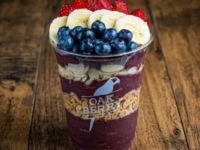As restrictions ease in many parts of the country a new report from Seven Miles Coffee Roasters predicts automation will become the essential ingredient in a successful coffee sector.
The Café 2025 trends forecast pinpoints the likely drivers of the industry over the next few years.
And top of the list, advancing technology and innovation will be crucial to meet the consumers’ need for speed, the report suggests.
While cashless payment systems and app-based ordering have become a mainstream process, automation will become the right arm of many cafés in years to come.
Automation key to coffee success
Dr Adam Carr, head of coffee science and education centre (CSEC) at Seven Miles, says “Our 2025 Café Report is something we have been working on long before COVID-19, yet so much of our findings lend themself to the new world we now live in.
“Australians’ love of coffee is one thing we have been sure of during these unprecedented times. Based on our modelling, we predict the café industry to bounce back stronger than ever. While some hospitality venues may have closed, many have adapted during the pandemic, and those who were able to weather the storm will thrive once restrictions are lifted.”
Coffee trends
- Fast, machine-made coffee
- Hygienic environments
- Cashless cafes
- Sustainability
- DIY at-home baristas
“Some things we expect to change post-pandemic are the strength and value of take-away coffee,” Carr points out. “This is a massive avenue for growth moving forward, and those who adopt these systems early are likely to grow at a prodigious rate.”
Remote kiosks, app-based ordering and cashless payment systems are already operating and will only become more pertinent, he suggests.
Adopting cashless payment systems will mean more customers Carr suggests. The ordering process is more efficient and helps maintain hygiene standards,
“While most customers prefer to sit down and drink their coffee, or bring their own cup, they are now more aware of the health impacts an action may cause, and that hygiene and environmental footprint need to walk together, side-by-side. We see automation as being the solution to this problem.”
Carr says cafe retail sales of roasted whole coffee beans are on the rise.
“We now have a more educated consumer who appreciates the complexity of coffee-making putting more importance on the knowledge and expertise of local baristas,” he suggests.
Coffee consumption fall predicted
However, how will Australia’s cafes and coffee shop fare if the coffee consumption fall that’s predicted becomes reality?
Global coffee demand is expected to drop by one million (60 kilogram) bags this year, with consumption impacted by the effects of COVID-19.
That’s according to the latest Coffee Outlook report from agribusiness specialist Rabobank.
In its Q2 2020 Coffee Outlook – Harvest Time, Rabobank estimates global coffee demand to decline by 0.8 per cent to 164.1 million 60kg bags in 2020.
In Australia Rabobank suggests the pressure on price may herald good news for cafés and food service outlets post-COVID-19.
Rabobank Australia commodity analyst Charles Clack said while this could be good for business, it is unlikely to reduce the cost of a cup of coffee for consumers.
“Indeed, less out-of-home purchasing has seen downward pressure on a number of soft commodities around the world, which could make the raw ingredient prices for Australia’s café and restaurant sector, including coffee and sugar, dip lower.
“This may help these businesses as they come out of COVID-19 lockdown and over the coming year or so,” he says.











